As we approach the end of 2015, there are a few things your small businesses can do to be sure you’re closing the calendar year securely and that you’re well prepared for stability and success in the new year. We’ve rounded up four priority tasks, and added a few suggested approaches for even stronger financials going forward.
The Most Important End-of-Year Accounting Tasks
- Review past due receivables Make note of any and all past due receivables. For each, determine the likelihood that the customer will pay, so you can decide which bills to send to a collection agency and which you will write off for a deduction.
- Review inventory Assess current inventory and determine the value of all unsold items. Write-down all remaining inventory to claim deductions on year-end taxes – overstating your inventory balance will cause you to pay taxes you don’t owe.
- Prepare IRS Forms W-2 and 1099-MISC By January 31, you must mail copies of the tax forms to anyone who worked for you and report the annual earnings of all full-time (W-2) employees and independent (1099) contractors. You must file with the IRS by February 28.
- Approve full-year financial reports and tax returns Before you submit full-year financial reports to your accountant or sign your returns, be sure to review them thoroughly for accuracy based on full-year financial reports.
Making Year End Close Manageable
Your year-end close can seem tedious and routine, but the accuracy of this process is vital to the ongoing success of your business. As you’re undertaking this year-end process – or even as you’re managing quarterly or monthly close – a few simple tips can make the task more manageable and less stressful.
- Accuracy is critical Don’t procrastinate or try to work too fast. Give yourself plenty of time to review everything, ask questions of your tax and accounting consultant, and keep an eye open for process improvements you can implement going forward.
- Establish goals and budgets You can use a variety of technology tools to stay organized and on track. Whether it’s a Google calendar or a task list application like Momentum, be sure to set daily, weekly, monthly and even quarterly goals, communicate with key stakeholders, and stay on top of deliverables until they are completed and crossed off the list.
- Automate, automate, automate Using accounting automation technologies can help with account reconciliations, departmental allocations, and recurring calculations. They can create real efficiencies, secure you from human computing errors, and keep you connected to your accounting advisor.
As 2015 comes to a close, it’s a good time to consider how organized, accurate and timely you’ve been for the past 12 months. Consider what changes you can implement to make 2016 even more profitable. We recommend starting with considering the strength and usefulness of your tax and accounting technology and advisory resources. If you feel ill-prepared for a low-stress year-end close, now may be a good time to consider a new approach for the near year.
The SJG team would love to help put you on a path to sustainable business security in 2016. Contact us to see what that would look like for you.

























